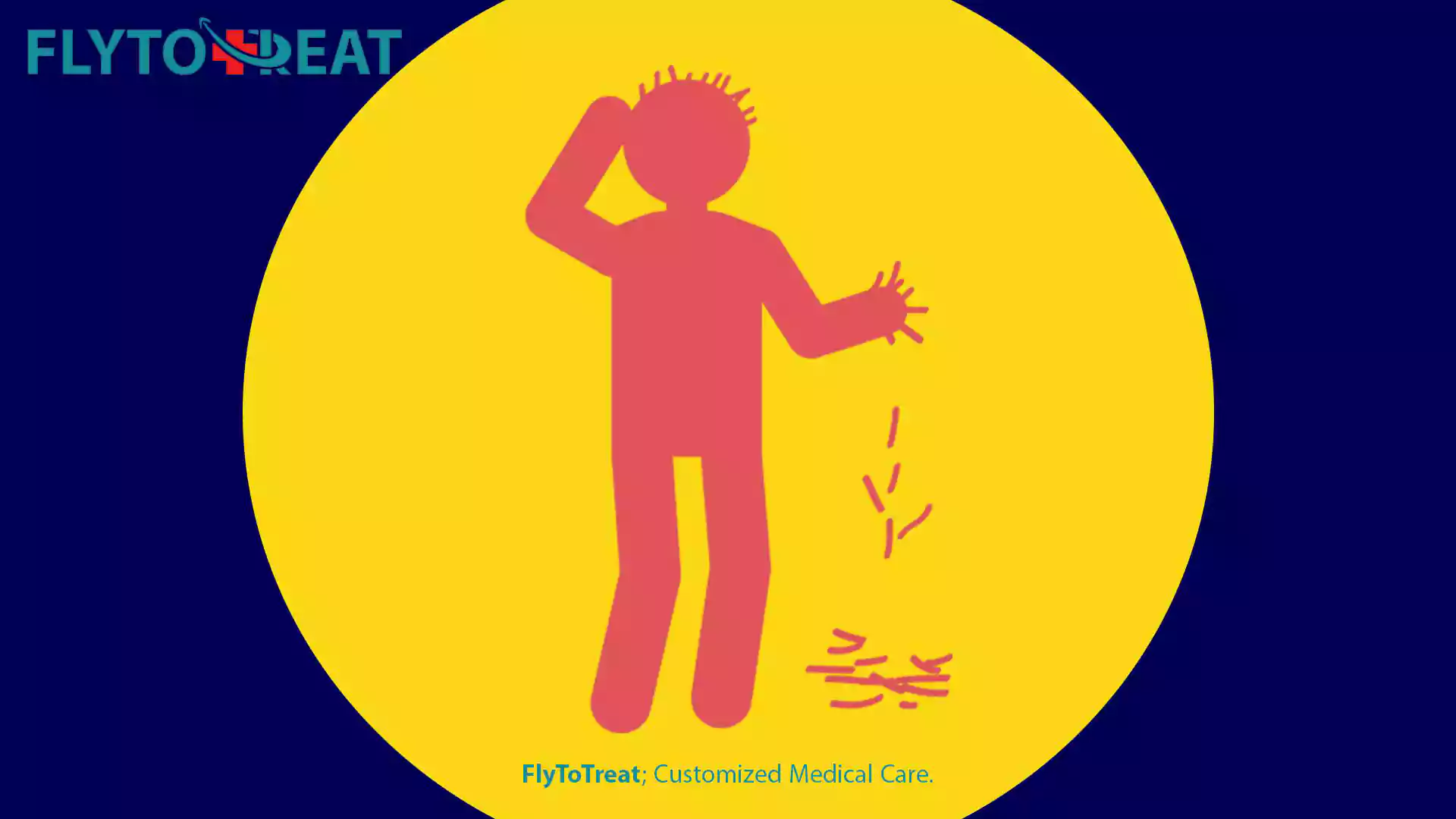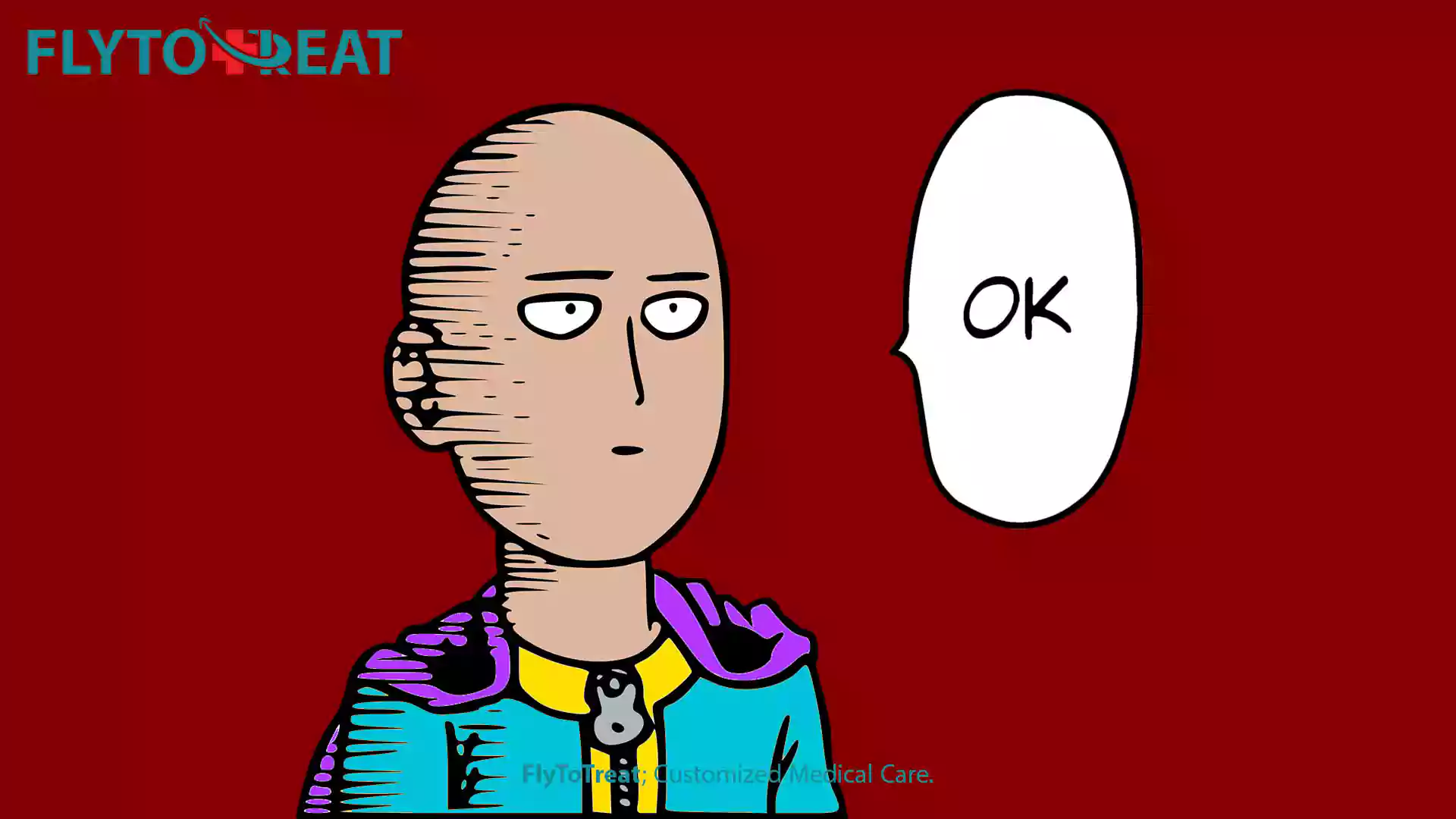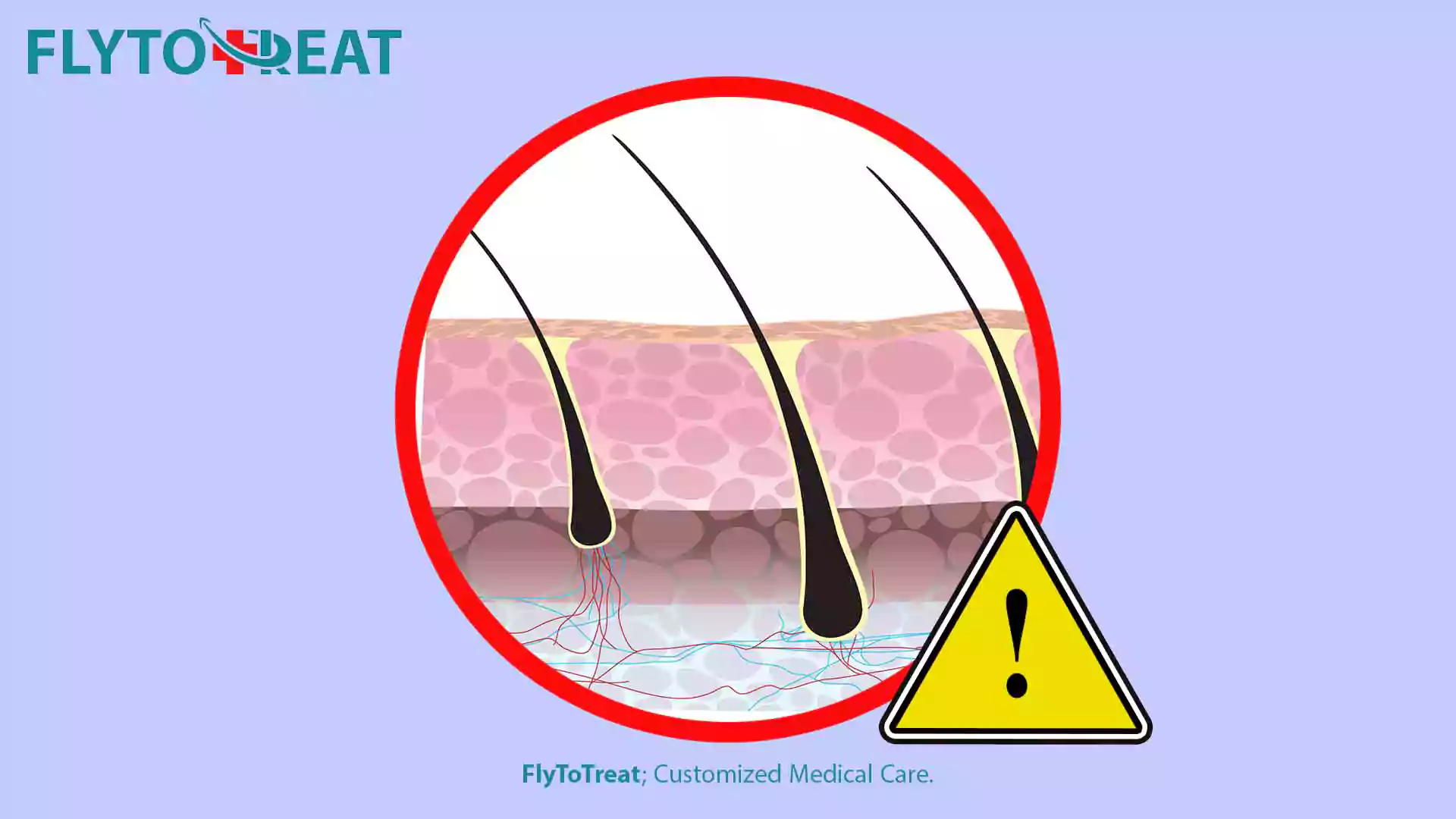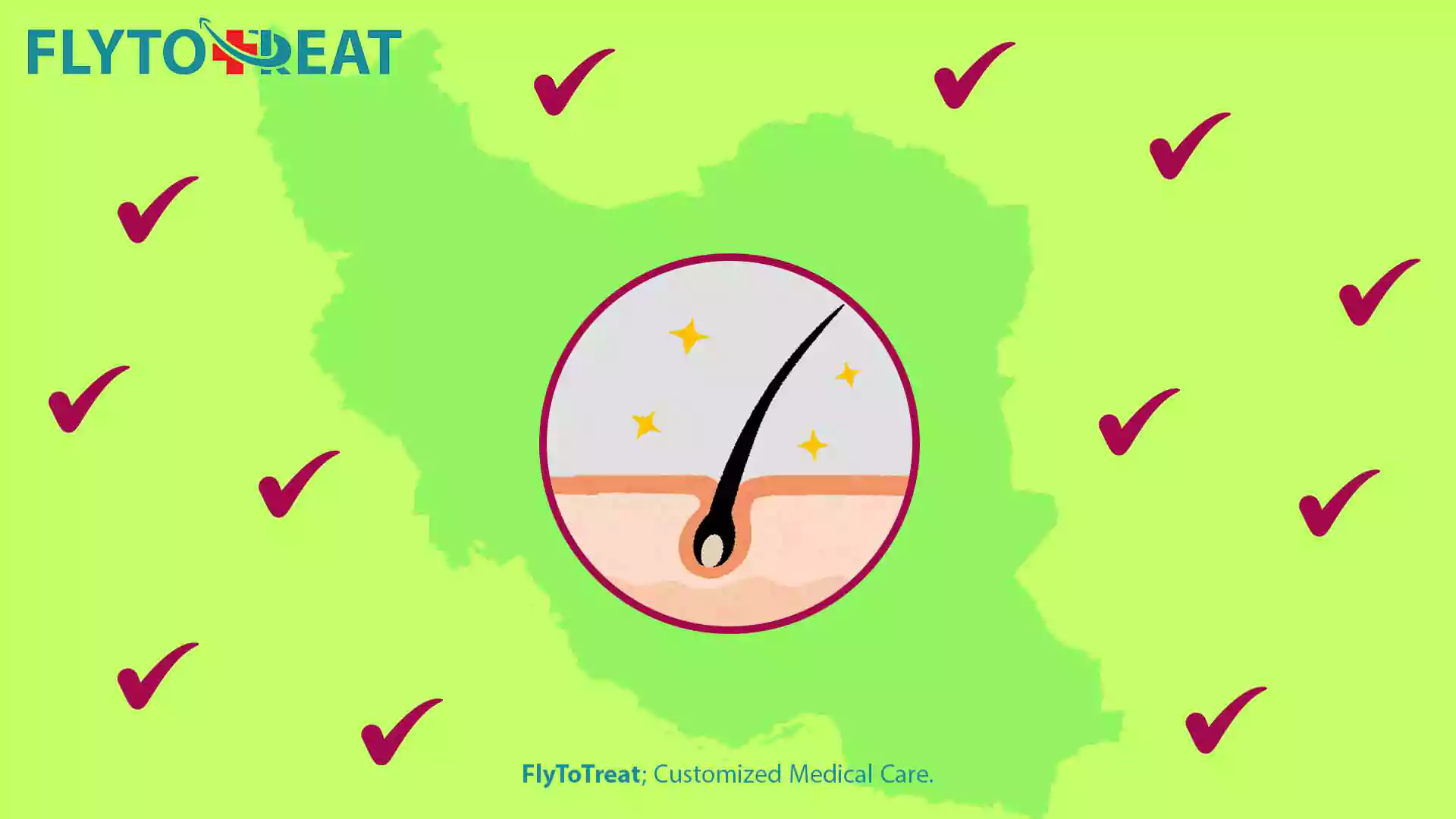
Hair Transplant in Iran
What Is Hair Transplant?
Hair Transplant in Iran is a type of surgery in which existing hair is moved to fill in a bald or thinning area. In order to implant hair at the front or top of the head, the surgical route requires hair to be moved from the back or side of the head.
This surgery has been popular in the United States since the 1950s, although procedures have improved significantly in recent years.
Hair transplants are usually performed in a medical clinic while the patient is anesthetized.
What Causes Hair Loss?
Anyone can experience losing hair on their head, but males are more likely to do so. The most typical reason for hair loss is male pattern baldness. The cases are the result of several factors, including:
- Family history (heredity). An inherited problem that occurs with aging is the most common source. This condition includes male-pattern baldness, female pattern baldness, and androgenic alopecia. It usually happens gradually and in common trends, with men experiencing a receding hairline and bald spots and women experiencing thinning hair and hair volume reduction in the crown of the head.
- Hormonal changes and medical conditions. Permanent or temporary hair loss can result from a wide range of disorders, including hormonal changes caused by pregnancy, delivery, menopause, and thyroid difficulties. Alopecia areata is an immune-related syndrome that causes patchy hair loss, scalp infections such as ringworm, and trichotillomania, a hair-pulling disorder.
- Medications and supplements. Several medications can lead to hair loss as a side effect. Drugs like those used to treat cancer, arthritis, depression, heart problems, gout, and high blood pressure.
- Radiation therapy to the head. Hair may not regrow in the same manner as formerly.
- A very stressful event. After experiencing a physical or mental shock, it is reasonable to notice overall hair thinning. This kind of hair loss is only transient.
- Hairstyles and treatments. Aggressive hairdressing or tight-pulling hairstyles, such as pigtails or cornrows, can lead to traction alopecia, a kind of hair loss. The most common cause of hair loss is pattern baldness, and Scarring may result in permanent hair loss.

Prevention
Genetics is the most common cause of baldness (male-pattern baldness and female-pattern baldness). This form of baldness is unavoidable. These pointers may help you delay preventable types of hair loss by:
- Brushing and combing your hair. It will work better if you use a detangler and avoid tugging, especially when your hair is wet. A wide-toothed comb may help reduce hair loss. Hot rollers, curling irons, and permanents are all examples of painful procedures to avoid.
- Consult your doctor. Contact your doctor if you use any medications or supplements causing hair loss.
- Be careful about the sun. Keep your hair away from the sun and other sources of UV light.
- Quit smoking. Some studies have shown a link between smoking and male baldness.
- Cooling cap. If you're undergoing chemotherapy, seek medical advice regarding getting a cooling cap. This hat may minimize your chances of losing hair while undergoing chemotherapy.
Symptoms
Hair loss manifests itself in different types of symptoms based on the source of that. Your scalp can be affected, or your entire body can strike suddenly or gradually.
The following are the most common signs and symptoms of hair loss:
- The top of the head is thinning gradually, and observing thinning hair is why aged people suspect hair loss. Men go through this situation by falling their hair at the hairline on the forehead.
- Bald areas that are round or spotty. Some patients have hair loss in the form of round or spotty bald spots on their scalp, beard, or brows. When the hair fall starts, you may have to itch your skin a lot and feel unpleasant.
- Hair loss that occurs suddenly. It is normal to expect hair loss after physical or mental trauma. You can see that your hair is falling in your hands when combing or washing your hair. Even gently tugging can't stop it. This hair loss typically involves overall hair thinning but is very transitory.
- Hair loss throughout the body. After going through some medical diseases and treatments, such as chemotherapy for cancer, one may experience hair loss all over the body. There is no need to worry since your hair will generally regrow.
- Scaling patches that extend across the scalp. This indicates ringworm, and it sometimes entails broken hair, redness, swelling, and oozing.
When to See a Doctor?
If you are bothered by persistent hair loss in you or your child, it is time to see your doctor. Talk to your doctor about early therapy for women with a receding hairline (frontal fibrosing alopecia) to avoid significant irreversible baldness.
Also, consult your doctor if you catch sudden or patchy hair loss or notice more significant hair loss than usual when combing or washing your child's hair. Sudden hair loss can indicate an underlying medical disease that must be treated.

Hair Replacement Isn't a Good Option For:
- Women who lose hair on their scalps in a widespread pattern
- People without enough donor hair sites to harvest hair from for transplantation.
- A person who develops keloid scars (thick, fibrous scars) after an injury or surgery
- Patients suffering from chemotherapy-induced hair loss
What Happens During a Hair Transplant in Iran?
The surgeons numb the area of your head with a small needle and local anesthetic after thoroughly cleaning your scalp.
FUT and FUE are the two basic methods for harvesting follicles for transplantation:
- In follicular unit transplantation (FUT):
- The surgeon will use a scalpel to cut a piece of scalp skin from the back of the head. Typically, the incision is several inches long.
- This is then stitched shut.
- Next, the surgeon divides the severed scalp into small bits with a magnifying lens and a sharp surgical knife. These portions, when implanted, will aid in the growth of natural-looking hair.
- Hair follicles should be extracted directly from the back of the head using hundreds to thousands of tiny punch incisions in follicular unit extraction (FUE):
- To receive a hair transplant, the surgeon uses a blade or a needle to cut tiny holes in the area of your scalp. They carefully insert hair into these holes.
- A surgeon usually transplants hundreds or even thousands of hairs during a single therapy session.
- Following that, the graft, gauze, or bandages will be applied to your scalp for a few days.
The procedure can last four hours or more. Approximately ten days after surgery, your stitches will be removed.
To achieve the desired full head of hair, you may need up to three or four sessions. Sessions are not consecutive; your appointments are spaced several months apart to heal the transplant completely.
What Happens After the Surgery?
You may feel uncomfortable for a while after the treatment. It would be a good idea to take drugs such as:
- Antibiotics can help minimize your chances of becoming infected.
- anti-inflammatory medicines to reduce edema
- Most people can continue working a few days after surgery.
- Pain medication.
Don't be surprised if the transplanted hair falls out in two to three weeks following the treatment, and this is helpful for the growth of new hair. Eight to twelve months after surgery, growing the new hair will attract your attention.
Many hair transplant surgeons prescribe minoxidil (Rogaine) or the hair growth medicine finasteride (Propecia) to enhance hair regrowth. These drugs are the best way to delay or prevent future hair loss.
Facial Hair Transplant in Iran
Beard and mustache transplants are highly popular among males nowadays. Patients with trauma, burns, or hereditary illnesses are the greatest candidates for facial hair transplants.
The process of facial hair transplantation is similar to that of conventional hair transplant surgery.
Both FUT and FIT procedures can be used for beard and mustache implants. Because hair grafts must be implanted with the correct growth direction, the operation necessitates extreme precision.

the Possible Risks and Side Effects of a Hair Transplant
Hair transplant side effects are usually minimal and resolve within a few weeks.
They can include:
- infection
- Bruising around the eyes
- The formation of crusts on the scalp after hair has been removed or implanted into
- Feeling numb or not feeling sensations on the treated scalp areas
- itching
- bleeding
- Folliculitis is a condition where the hair follicles become inflamed or infected.
- The swelling of the scalp
- Shock loss is the loss of transplanted hair that occurs suddenly but is usually only temporary.
- unnatural-looking tufts of hair
What Is the Long-term Outlook?
Typically Those who have used this method, their new hair keeps growing really well in the implanted skin areas.
Based on the abovementioned factors, the new hair may become more or less dense:
- The looseness of your scalp skin, also known as scalp laxity
- follicular density in the transplanted area
- hair condition or caliber
- hair curl
Suppose you do not take medication (such as minoxidil or finasteride) or have low-level laser therapy. In that case, you may begin to experience hair loss in parts of your scalp that have not been treated.
It is critical to discuss the intended result with your physician and set reasonable goals.

Hair Transplant for Women
Hair transplantation is one of the most common cosmetic procedures performed on males. This operation, however, is frequently performed on women as well, and women typically experience two forms of hair loss.
The first is a receding hairline, whereas the second is female pattern baldness. Receding hairlines affect both men and women and can be corrected by decreasing the hairline.
The surgeon in this scenario takes hair from the patient's hair bank and transplants it to the front of the patient's hair.
Women with a diffuse pattern of hair loss are not good candidates for hair transplants and should instead try other methods to improve new hair growth.
Expectations and Recovery
Feeling a little sensitive on your scalp may happen to you after surgery, and you might have to take painkillers for a few days. Your surgeon will have you keeping bandages over your scalp for at least two days.
They may also give you an antibiotic or an anti-inflammatory medication to take for a few days. After 2 to 5 days of the surgery, most clients can easily return to work.
The transplanted hair may fall out after two to three weeks of surgery. Still, you should expect development within a few months.
6 to 9 months after the surgery is the time to notice 60% new hair growth. Some surgeons recommend the hair-growth medicine minoxidil (Rogaine) to enhance hair growth following transplantation; however, the evidence is mixed.
Things to Do After Hair Transplant Procedure
- Avoid Driving
Needless to say, driving under the influence of strong sedatives is a dangerous activity. So dear clients, if you have been given a strong sedative, please do not drive for 24 hours.
- Avoid Sleeping Flat
Sleeping with your head elevated is the sleeping pattern you should adopt for a while. If you forget it, swelling will be waiting for you.
- Pay attention to Your Labels.
If you want to fail all your efforts to have a successful result, ignore the labels on your medications and do not follow the instructions exactly.
- Use Ice
Now it's time to go back to our grandmother's advice in the past to reduce swelling. Take the ice seriously and apply it above your eyebrows for twenty minutes.
- Avoid Scrubbing Your Hair or Shower
You have to overrun your tendencies and ignore washing your head for the first 48 hours after your procedure. After three days, you can get what you want and wash your hair, but please do it slowly.
- Avoid Dyeing Your Hair
Forget about dying your hair within four weeks of your hair restoration.
- Drink water
It is critical to stay hydrated during your transplant. The more hydrated you are, the more relaxed you will feel and recover faster.
- Avoid Sleeping on Your Tummy
In the first week after your treatment, it is necessary to be careful not to rub your new hairline against your pillow.
- Avoid exposing your scalp to direct sunlight.
One of the worst things to do in the first week keeps your scalp exposed to direct sunlight between 10 a.m. and 2 p.m.
- Avoid Sweating It Out
Do not engage in any activity that will make you sweat heavily, such as relaxing in a sauna.
- Avoid Having Sex
It is recommended to keep yourself abstinent from sex for the first week after having the surgery.
- Avoid eating fast food and sugar.
Nutrition is almost as important as healthy blood flow and adequate hydration during your recovery period. It is important to avoid fast food, but it is even more important to avoid soda, processed juice, baked goods, and other sugary foods.

Iran is the Best Country for Hair Transplant
Due to the high skill level of Iranian surgeons and low medical costs, Iran has become one of the world's cosmetic surgery hubs. Hair transplantation is a popular cosmetic procedure in Iran.
Iraniannsurgeons use the most up-to-date methods and techniques for hair loss treatment available anywhere in the world to help you get through it as easily as possible.
Why choose FlytoTreat for Hair Transplant?
Due to the high sensitivity of cosmetic surgeries, FlytoTreat recommends the most qualified, experienced surgeons in Iran. They are chosen based on their previous surgery success rate.
FlytoTreat will be there for you from the moment you decide on any cosmetic procedure. You can rely on us throughout the pre-and postoperative phases of your surgery.
There are several ways to seek advice from the FlytoTreat team, including the website and social media platforms such as Facebook, Instagram, and WhatsApp, where you can ask questions and receive assistance at any time of day. You'll also be able to schedule a free consultation with your preferred doctor easily.
Conclusion
Whether your severe hair loss results from unlucky genes, medications, age, stress, or other factors makes no difference. This procedure will meet your needs and can boost your self-esteem, happiness, and confidence.
You have the right to expect a quick and comfortable recovery and successful and satisfying treatment outcomes.
Contact the professional experts at FlytoTreat in Iran to schedule your initial consultation. Get more information about the best way to get a hair transplant procedure, the cost of a hair transplant, and what you should do.
MEDICALLY REVIEWED BY: Dr. Ali Bazazi
AUTHOR: FlytoTreat's team of Authors
20 June 2023 - Updated At: 13 May 2024
Related Articles
Comment






